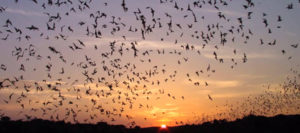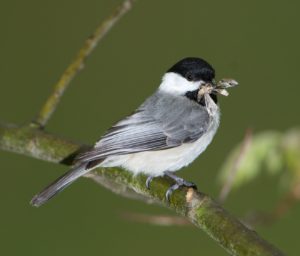
Spiders, bats, birds, carnivorous plants and other species help to control insects and other pests. For example, according to the U.S. Fish and Wildlife Service, A typical summer colony of 100 bats feeding 200 days will consume more than 2200 pounds of insects or approximately 600,000,000 bugs! These organisms depend on healthy native plant communities for food, shelter and other habitat.
Further, through decomposition, healthy ecosystems break down both natural and human generated waste and recycle the nutrients and other materials into growing plants and animals. Native plant communities also trap filter pollutants in wastewater, leading to cleaner and healthier and water supplies.
Native plants and soils help to filter out, sequester or decompose organic wastes, including those introduced through agriculture. Water filtering by wetlands involves the breakdown of nutrient-rich waste from human and animal sources and the removal of disease-causing organisms. Bioremediation of soils and water relies on the metabolic activity of plants and microorganisms to absorb pollutants from soil or water and to digest toxins. This purification of fresh water for drinking and other purposes as well as the removal of microbes and other toxins provide an important benefit to human health.

Songbirds also control insect populations. Songbird young can consume over 400 caterpillars per day. Photo © Doug Tallamy, NPCC Advisor
In addition, by suppressing pest populations, natural predators supported by native plant communities maintain the stability of agricultural systems and can reduce producers’ pest control costs. Studies find that more diverse landscapes and native plant communities provide more effective agricultural pest control.
Examples and Additional information
Completing and Using Ecosystem Service Assessment for Decision-Making: An Interdisciplinary Toolkit for Managers and Analysts Value of Nature to Canadians Study Taskforce Federal, Provincial, and Territorial Governments of Canada — 2017 © Her Majesty the Queen in Right of Canada
How do ecosystems benefit from scavengers?
The Economic Value of Ecological Services Provided by Insects
Flow and stability of natural pest control services depend on complexity and crop rotation at the landscape scale — 2013 Journal Article
Landscape diversity enhances biological control of an introduced crop pest in the North-Central USA. — 2009 Journal article.
Optimal control of soybean aphid in the presence of natural enemies and the implied value of their ecosystem services. — 2012 Journal article
https://www.flytrapcare.com/phpBB3/using-cps-for-indoor-pest-control-t13985.html

